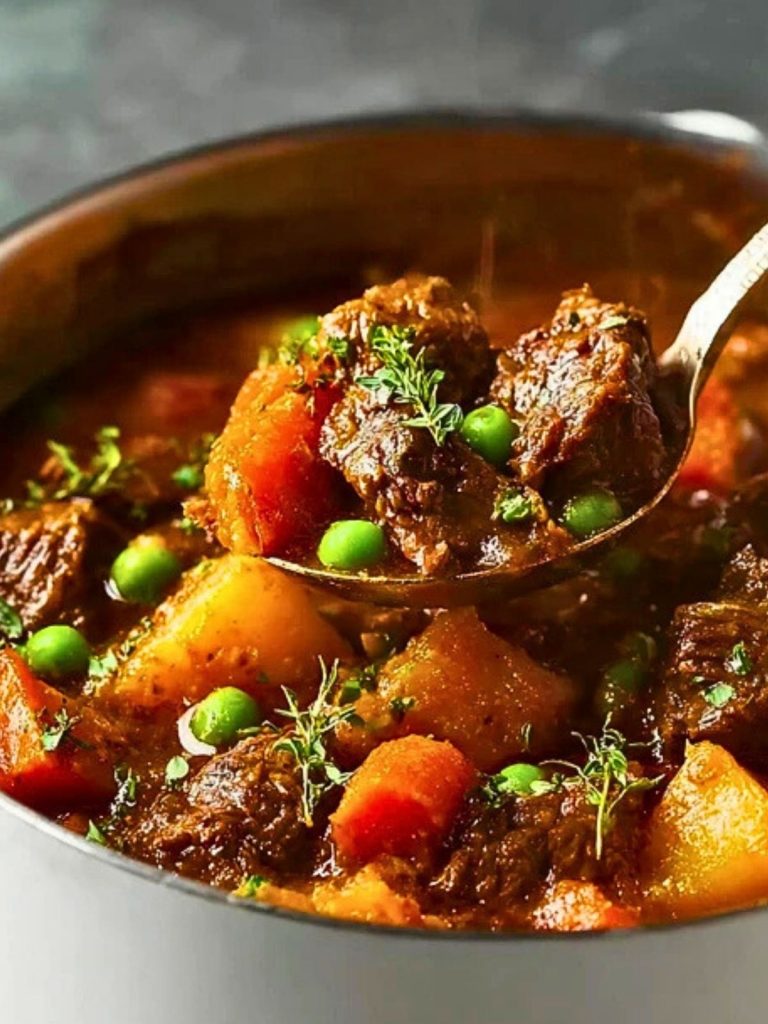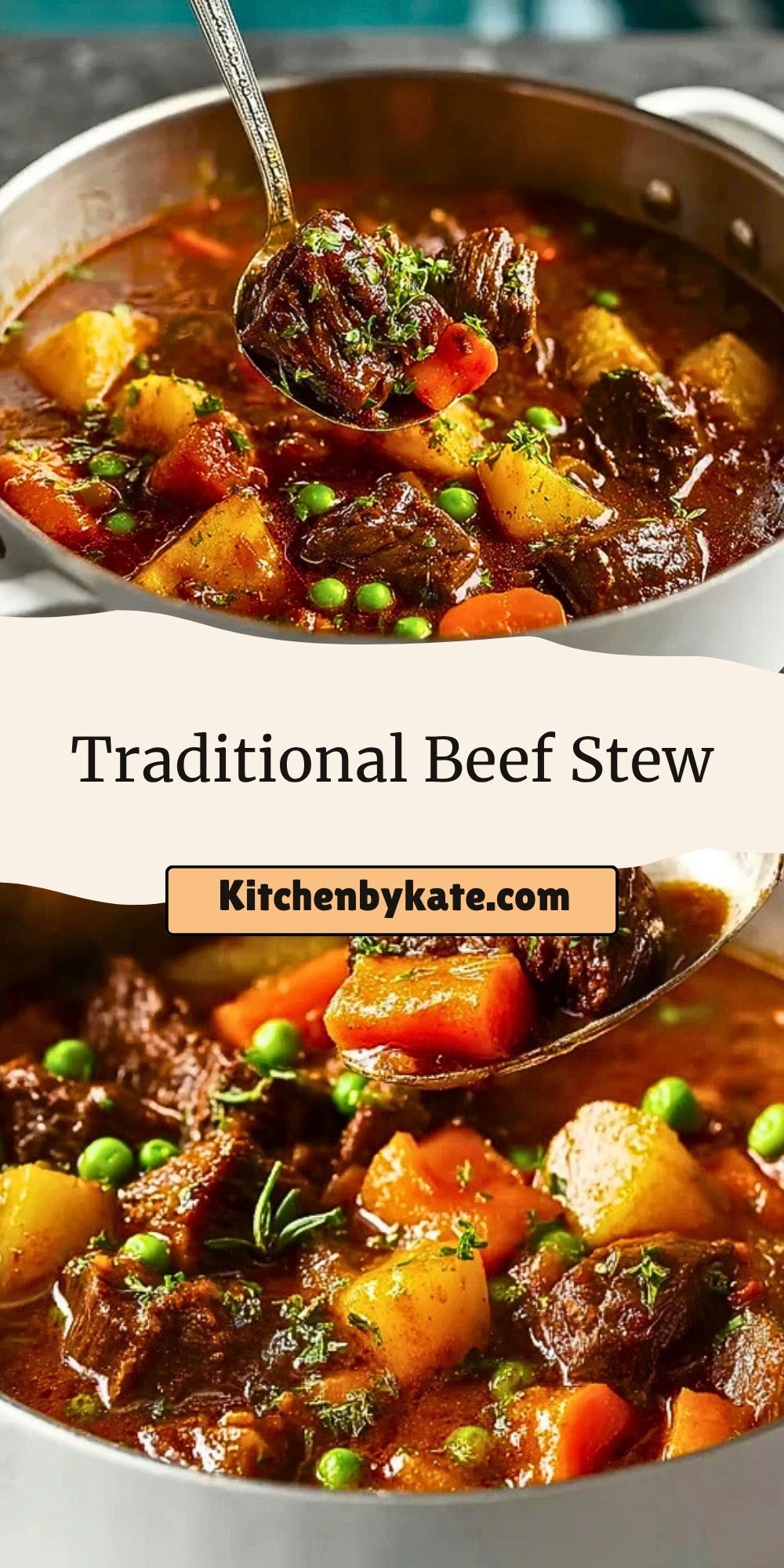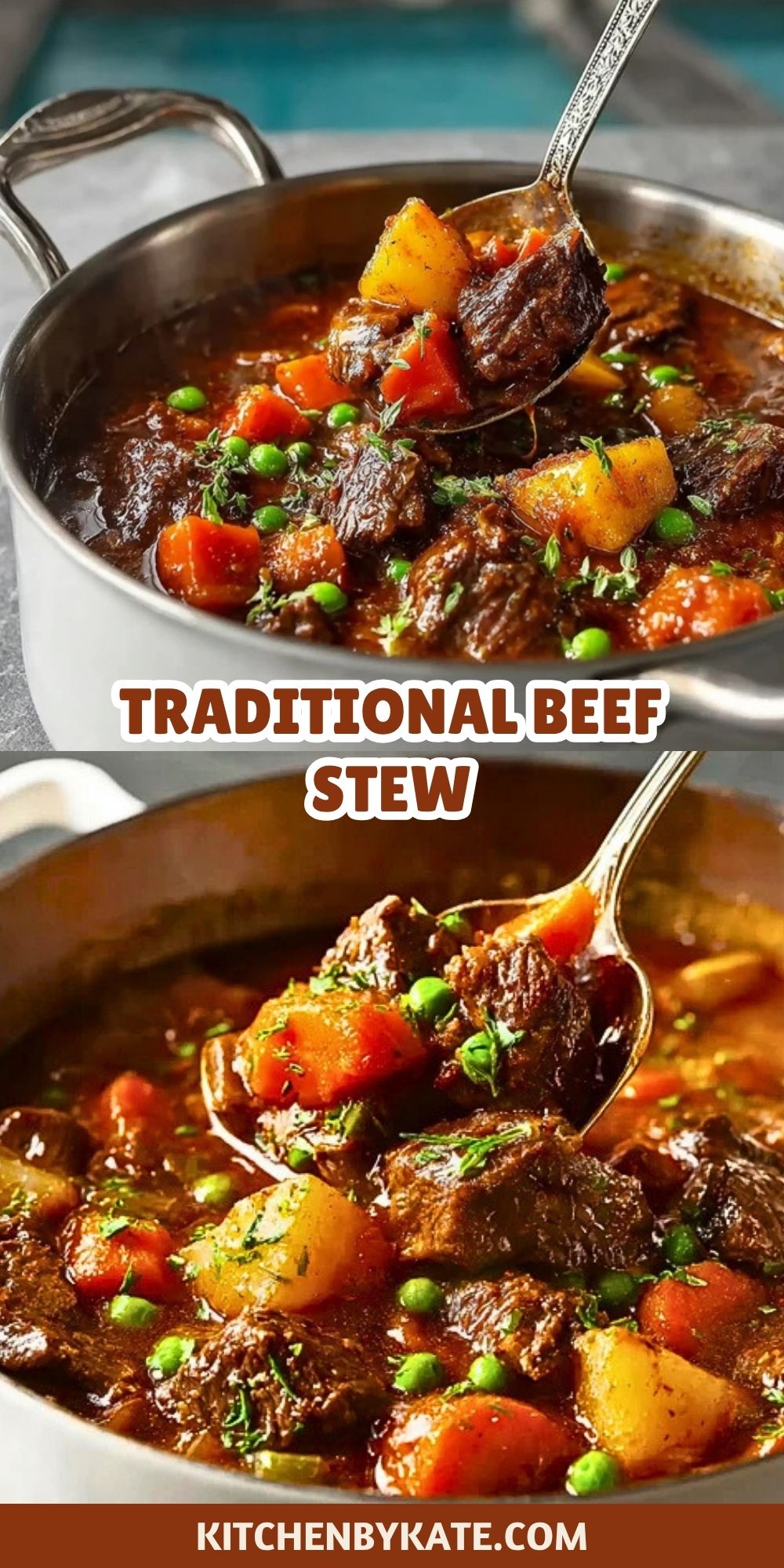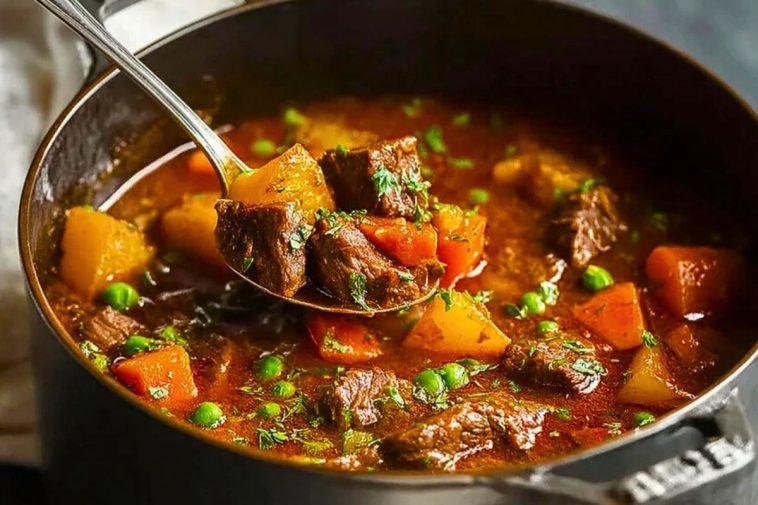There’s something incredibly comforting about a hearty bowl of Traditional Beef Stew. Brimming with tender chunks of beef, rustic vegetables, and a deeply savory broth, it’s the kind of meal that warms you to your core on a chilly evening. Whether it’s ladled over a pile of mashed potatoes or enjoyed with crusty bread, every bite is rich, flavorful, and satisfying.
This classic dish is all about slow-simmered goodness. As the stew cooks, the beef becomes melt-in-your-mouth tender, and the vegetables soak up all the aromatic herbs and spices. It’s not just food; it’s a memory-making recipe that deserves a place in every cook’s winter lineup.
Why You’ll Love This Traditional Beef Stew
Traditional Beef Stew is the epitome of comfort food with layers of flavor developed over a low and slow cooking process. It’s perfect for batch cooking, meal prepping, and feeding a crowd. Plus, it’s a one-pot meal that saves you time on cleanup while offering maximum taste.
It’s a great make-ahead dish because the flavors only deepen with time. It’s also extremely versatile—swap out veggies based on what you have or make it gluten-free with a few tweaks.
Preparation Phase & Tools to Use
Before you start, gather your tools and prep your workspace—this makes for a smoother, more enjoyable cooking experience:
- Heavy-Duty Dutch Oven or Large Pot: Essential for even cooking and heat retention. The deep walls and heavy bottom allow the stew to simmer without scorching.
- Sharp Chef’s Knife: Vital for cleanly cutting through tough beef and root vegetables.
- Wooden Spoon or Spatula: Perfect for scraping up browned bits from the pot to infuse more flavor.
- Cutting Board: Use a large one to safely chop all your vegetables and meat.
- Measuring Cups & Spoons: To keep the seasoning accurate and consistent.
Taking the time to brown the beef properly and deglaze the pot with wine or broth will build those complex flavors we crave in a great beef stew.


Ingredients for the Traditional Beef Stew
- Beef Chuck Roast: This cut is ideal for stew due to its marbling and ability to become tender with slow cooking.
- Carrots: Add sweetness and color while holding their texture well in long cooking times.
- Potatoes: Provide heartiness and soak up the flavorful broth beautifully.
- Onions: Bring a savory base flavor that deepens as the stew simmers.
- Garlic: Essential for a robust, aromatic profile.
- Tomato Paste: Adds richness and a slightly tangy depth.
- Beef Broth: The liquid foundation that melds all flavors together.
- Red Wine: For deglazing and adding deep, bold notes.
- Worcestershire Sauce: A small addition that boosts umami.
- Bay Leaves & Thyme: Classic herbs that bring earthy balance.
- Frozen Peas: Stirred in at the end for color and freshness.
How To Make the Traditional Beef Stew
Step 1: Sear the Beef
Pat the beef chunks dry and season with salt and pepper. Heat oil in a Dutch oven over medium-high heat and sear the beef in batches until browned on all sides. Set aside.
Step 2: Build the Base
In the same pot, add chopped onions and cook until translucent. Add garlic and tomato paste, cooking for another 1-2 minutes to develop the base flavor.
Step 3: Deglaze and Simmer
Pour in the red wine to deglaze the pot, scraping up browned bits. Add back the beef, along with broth, Worcestershire sauce, bay leaves, and thyme. Bring to a boil, then reduce to a low simmer. Cover and cook for 1.5 hours.
Step 4: Add Vegetables
Add carrots and potatoes to the pot. Cover again and simmer for another 45 minutes until vegetables and beef are fork-tender.
Step 5: Finish with Peas
Stir in frozen peas during the last 5 minutes of cooking. Taste and adjust seasoning. Discard bay leaves before serving.
Serving and Storing Your Stew
Serve the stew hot in deep bowls with warm, crusty bread or over creamy mashed potatoes. It also pairs beautifully with a sprinkle of fresh parsley or a dash of cracked pepper.
To store, let the stew cool completely. Transfer to airtight containers and refrigerate for up to 4 days. For longer storage, freeze in batches for up to 3 months. Reheat gently over low heat on the stove for best texture.
Frequently Asked Questions
Can I make this beef stew in a slow cooker?
Yes! Brown the beef and sauté the aromatics first, then transfer everything to your slow cooker and cook on low for 8 hours.
What cut of beef works best?
Chuck roast is best for stew due to its marbling and texture after slow cooking. Avoid lean cuts like sirloin.
Can I freeze this stew?
Absolutely. Just let it cool, portion it out, and freeze for up to 3 months. Thaw overnight before reheating.
How can I thicken the stew?
Mash a few of the potatoes directly into the broth or mix 1 tablespoon of cornstarch with 2 tablespoons of water and stir in toward the end.
Is red wine necessary?
Not mandatory, but it adds depth. If skipping, just use extra broth or a splash of balsamic vinegar.
Can I add other vegetables?
Yes! Parsnips, celery root, or mushrooms are great additions to customize the stew.
Want More Stew Ideas?
If you’re loving this Traditional Beef Stew, you might want to check out these other soul-warming meals from my kitchen:
- Hearty Italian Sausage Soup for zesty, herby comfort.
- Simple Chili Con Carne with a bold kick.
- French Onion Ground Beef and Rice Casserole for a savory, oven-baked twist.
- Garlic Butter Beef Cheesy Bowtie Pasta if you crave cheesy, garlicky flavor.
- Minimal Ingredient Hobo Casserole for a budget-friendly, filling classic.
Save This Pin For Later
📌 Save this recipe to your Pinterest comfort food board so you can come back to it any time.
And let me know in the comments how yours turned out. Did you add mushrooms or switch up the potatoes? Did you serve it with bread or noodles?
I love hearing how others make these recipes their own. Questions are welcome too—let’s help each other stew smarter!
👉 For daily home-cooked inspiration, check out my Pinterest page Kitchen By Kate.


Traditional Beef Stew
- Total Time: 2 hours 35 minutes
- Yield: 6 servings
Description
This Traditional Beef Stew recipe is a hearty, slow-simmered classic made with tender beef chuck, rustic vegetables, and savory broth. Perfect for cold nights, it’s an easy one-pot comfort meal packed with flavor. Great for meal prep, freezer-friendly, and customizable for gluten-free diets.
Ingredients
2 pounds beef chuck roast, cut into chunks
4 carrots, sliced
3 potatoes, cubed
1 large onion, chopped
3 cloves garlic, minced
2 tablespoons tomato paste
4 cups beef broth
1 cup red wine (optional)
1 tablespoon Worcestershire sauce
2 bay leaves
1 teaspoon dried thyme
1 cup frozen peas
2 tablespoons olive oil
Salt and black pepper to taste
Instructions
1. Pat the beef dry and season with salt and pepper. Heat olive oil in a Dutch oven over medium-high heat and sear the beef in batches until browned. Set aside.
2. In the same pot, sautée chopped onions until translucent. Add garlic and tomato paste, cooking for 1-2 minutes.
3. Deglaze with red wine, scraping up browned bits. Return beef to the pot along with beef broth, Worcestershire sauce, bay leaves, and thyme. Bring to a boil, then simmer covered for 1.5 hours.
4. Add carrots and potatoes. Cover and cook for another 45 minutes until vegetables are tender.
5. Stir in frozen peas in the last 5 minutes. Adjust seasoning and remove bay leaves before serving.
Notes
Browning the beef adds deep flavor—don’t skip this step.
Deglaze the pan thoroughly to capture all the savory bits at the bottom.
If you prefer a thicker stew, mash a few potatoes into the broth or stir in a cornstarch slurry.
- Prep Time: 20 minutes
- Cook Time: 2 hours 15 minutes
- Category: Stew
- Method: Stovetop
- Cuisine: American
Nutrition
- Serving Size: 1.5 cups
- Calories: 410
- Sugar: 4g
- Sodium: 620mg
- Fat: 18g
- Saturated Fat: 6g
- Unsaturated Fat: 10g
- Trans Fat: 0.5g
- Carbohydrates: 28g
- Fiber: 4g
- Protein: 35g
- Cholesterol: 95mg



